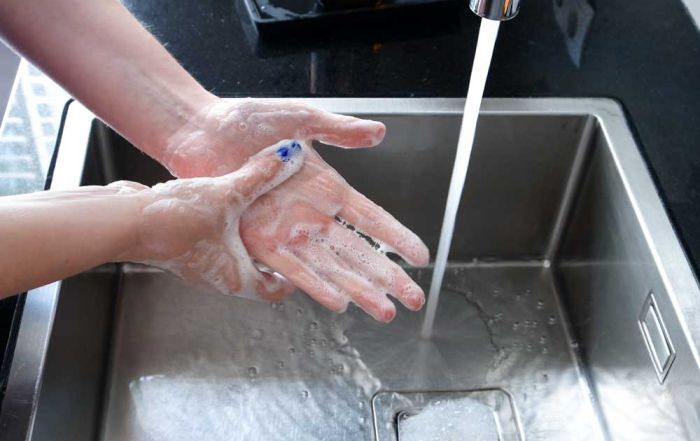Protecting Fresh Produce Post-Harvest, Integral to Safe Food
During the height of the summer, at least in the Midwest, farmers markets are in full swing and fresh produce is plentiful. Every backyard gardener is reaping the benefits of their work, with bountiful harvests of tomatoes and cucumbers. Everyone seems to have a neighbor who is trying to pawn off his or her over-production of cucumbers or summer squash during this time of year. When picking up that produce at the farmer’s market or from your neighbor down the street, have you ever given any thought to the microbial safety of it? Honestly, even in my position, it certainly is NOT the first thing that comes to my mind. But, earlier this month, I came across a news story out of Wisconsin discussing a Salmonella outbreak associated with shelled peas sold at a local farmers market. Who would have thought shelled peas would be impacted? The story noted, and it served as a great reminder, that most outbreaks associated with Salmonella in produce are due to mistakes made in handling or transportation of produce after harvesting.
If you are unfamiliar with Salmonella, check out a blog we did earlier this year that provided some information about the bacteria. In short, it accounts for almost a third of all food-related deaths in the United States each year, causing about 450 deaths yearly. Mild symptoms usually include diarrhea, fever, and abdominal cramps.
…we must also realize that what we do in our own gardens or homes cannot be the same practices we employ in our operations when feeding hundreds, if not thousands of guests per day – all with different immune system and food backgrounds than our own.
Proper handling of produce is vital to ensuring Salmonella or any one of the many foodborne illnesses does not grow to a level that it will case illnesses. First, be sure to order your produce from a reputable supplier. Working with a local farmer is perfectly acceptable. Certainly, having the Good Agricultural Practices or Good Handling Practices designation is good, but it is not required as long as they are following those practices on the farm.
When receiving fresh produce, be sure to check for quality and freshness. While there is no temperature requirement for whole fresh produce, be sure the quality is up to your standards and, even with the current issue we are having with supply chains, don’t feel pressured to accept a lower quality product.
When storing produce, be mindful of temperature and humidity, which can both impact shelf life. While many produce items do well at 32°F, some are cold sensitive and may require a higher temperature. To check the optimal storage conditions for fruits, vegetables, and herbs use free online resources from reputable authors. Our two favorite for fruits and vegetables are the fact sheets from Cornell University Cooperative Extension or the University of Maine.
I know…I know…it is fresh produce; how dangerous can it be? I am sure everyone reading this is thinking back to the time that they ate raw produce – fresh peas from the shell as you were picking them, corn off the cob as you were putting it up for the winter, or the crème de la crème for all gardeners – a fresh red, ripe tomato straight from the vine. I must admit, I have tried all of them and didn’t even wash them before consuming, and yet I live to tell the tale. However, we must also realize that what we do in our own gardens or homes cannot be the same practices we employ in our operations when feeding hundreds, if not thousands of guests per day – all with different immune system and food backgrounds than our own. Risk Nothing.
READ MORE POSTS
30 Years Later: The Foodborne Illness Outbreak that Changed Food Safety
In January, we hit a major anniversary. One I am betting snuck by many of you – including me! January marked 30 years since the deadly 1993 E. coli O157:H7 outbreak at Jack in the Box restaurants on the west coast. The anniversary wasn’t on any of the major news networks that I recall. It did make it into a few newspapers, at least one or two of the newspapers that are left. It wasn’t until late-February that I realized it.
Does Temperature Really Matter when Washing your Hands?
In January, I reviewed the changes to the 2022 Food Code in my blog (check out Part I and Part II), and one change to the food code that I had mentioned, but didn’t discuss in-depth, was the change that lowered the water temperature a hand sink was required to produce to 85°F, as noted in Section 2-202.12 of the code. This requirement has been in place since the publishing of the 2001 Food Code, which required a water temperature of 100°F. Prior to this, 110°F was required (see the 1999 Food Code). So why the change and does water temperature when washing your hands really matter?
Hand sinks: Often Taken for Granted, but an Essential Part to Effective Hand Hygiene
Late in January, I received a question about hand sinks in a foodservice operation. The question pertained to school staff (teachers and aides) who were using a hand washing sink in the school kitchen. The question came as a matter of who was allowed access to the kitchen to use the sink, but the question itself caused me to go down a rabbit hole of requirements for hand washing sinks in foodservice operations.
Hot off the Press: The 2022 Model Food Code has been Released! Part Two.
Earlier in the month, we started a discussion about the changes to the 2022 Food Code. If you missed that post, late in December 2022, the Food and Drug Administration released the 2022 Food Code and I wanted to highlight a few of the changes that have been made to the code.










